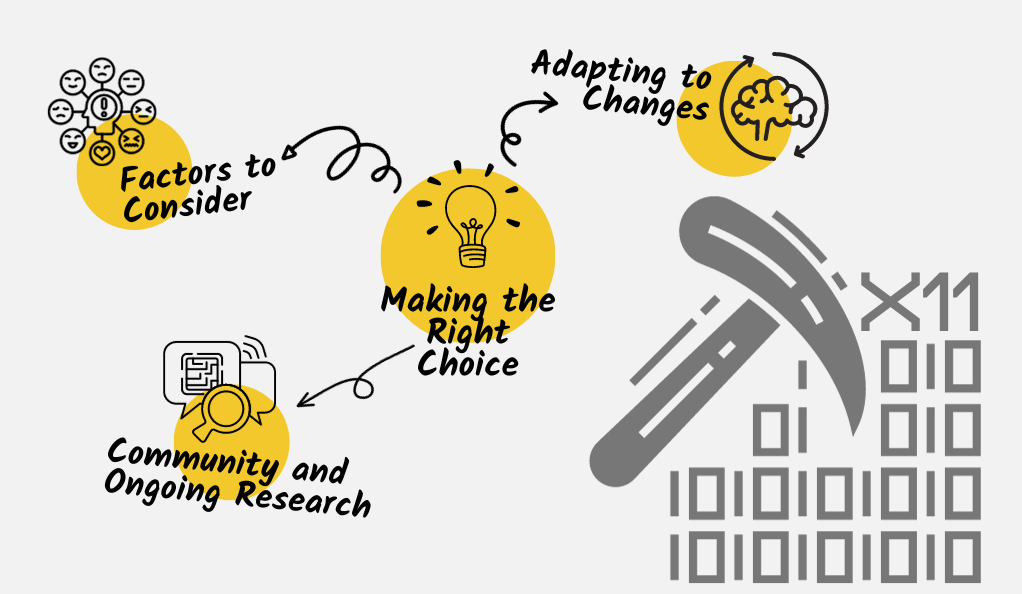In the realm of digital currencies, cryptocurrency mining stands as a cornerstone, fueling the decentralization and security of blockchain networks. At its core, mining is a computational process where transactions are verified and added to the public ledger, the blockchain. Let’s delve deeper into the fascinating world of mining and understand its significance.
What is Cryptocurrency Mining?

Cryptocurrency mining, often simply referred to as ‘mining,’ is the process by which new coins are introduced into circulation. This involves solving complex mathematical problems using computational power. Miners use powerful computers, often specially designed for mining, to solve these problems. Once a problem (or a set of transactions) is solved, it forms a ‘block.’ This block is then added to the blockchain.
Basic Mining Terminologies
| Term | Description |
|---|---|
| Block | A collection of transactions bundled together, which, once verified, gets added to the blockchain. |
| Hashrate | The speed at which a miner’s computer operates in the mining process. Measured in hashes/second. |
| Proof-of-Work | A consensus algorithm used by many cryptocurrencies to prevent any entity from taking control. |
Role of Miners in the Blockchain Network
Miners play a dual role in the blockchain ecosystem:
- Transaction Verification: Every transaction made on the blockchain needs verification. Miners ensure that these transactions are legitimate, preventing double-spending and maintaining the integrity of the network.
- Network Security: By verifying transactions and adding them to the blockchain, miners also ensure the network’s security. The decentralized nature of blockchain means that the more miners there are, the more secure the network becomes. This is because altering any information on the blockchain requires consensus, and with more miners, achieving malicious consensus becomes nearly impossible.
Understanding the X11 Algorithm
As we journey further into the mining cosmos, it’s essential to understand the various cryptographic algorithms that underpin different cryptocurrencies. One such notable algorithm is the X11, which offers distinct advantages and challenges for miners.
What is the X11 Algorithm?
The X11 algorithm is a proof-of-work (PoW) hashing algorithm, which, as the name suggests, utilizes 11 different cryptographic functions in its operation. Designed by Evan Duffield for the Dash cryptocurrency (originally called Darkcoin), the X11 algorithm was introduced as a more energy-efficient alternative to the then-dominant SHA-256 used by Bitcoin.
One of the standout features of X11 is its “chained hashing” approach. Instead of relying on a single hashing function, X11 uses a sequence of 11 scientific hashing algorithms. This design provides enhanced security, as a potential attacker would need to break all 11 hash functions to compromise the network, a task deemed computationally improbable.
The 11 Hashing Functions of X11
- Blake
- BMW
- Groestl
- JH
- Keccak
- Skein
- Luffa
- Cubehash
- Shavite
- SIMD
- Echo
Why is X11 Unique Compared to Other Algorithms?
Several factors set the X11 algorithm apart from its counterparts:
- Energy Efficiency: X11 was designed to be more energy-efficient than algorithms like SHA-256. This efficiency translates to reduced heat generation, prolonging the life of mining hardware and potentially reducing electricity costs.
- Enhanced Security: The use of 11 different hashing functions means that even if one function becomes compromised, the system remains secure due to the ten other functions.
- ASIC Resistance: Initially, the complexity of the X11 algorithm made it resistant to Application-Specific Integrated Circuits (ASICs), specialized hardware designed for mining. This resistance aimed to level the playing field, allowing individual miners using regular CPUs and GPUs to remain competitive. However, it’s worth noting that with technological advancements, ASICs for X11 have since been developed.
- Adaptive Block Times: Some cryptocurrencies utilizing the X11 algorithm feature adaptive block times, adjusting the difficulty dynamically based on network conditions. This adaptability ensures consistent block discovery rates, irrespective of sudden increases or decreases in network hash rate.
Solo Mining: Going it Alone
Venturing into the world of solo mining is akin to setting off on a solo expedition, equipped with only your resources and determination. In the context of cryptocurrency mining, solo mining means that a miner undertakes the entire mining operation without joining a pool or collaborating with other miners.
What is Solo Mining?
Solo mining is the traditional form of mining, where an individual miner uses their computational power to solve blocks independently. The entire block reward, along with transaction fees from the block, goes to the solo miner once they successfully solve and add a block to the blockchain.
Solo Mining at a Glance
| Aspect | Description |
|---|---|
| Mining Operation | Individualized and independent |
| Block Rewards | 100% received by the miner |
| Transaction Fees | All fees from the block go to the miner |
| Profit Variance | High – miners might go long periods without rewards but can also get large rewards intermittently |
| Technical Requirements | Higher, as miners need a full node and to manage all technical aspects on their own |
The Allure of Full Block Rewards
The primary allure of solo mining lies in the potential of receiving full block rewards. When a solo miner successfully mines a block, they don’t have to share the rewards with anyone. This means that, in scenarios where a miner has sufficient computational power and luck, solo mining can be more profitable than pool mining.
Technical Requirements and Challenges
However, solo mining isn’t without its challenges:
- High Variance: Solo miners might experience high variance in rewards. Given the competitive nature of mining, there might be long periods where a miner doesn’t find any blocks, especially if they have limited computational power.
- Technical Know-How: Solo miners need a robust technical understanding of the mining process. They need to run a full node, manage their mining software, handle updates, and troubleshoot any issues independently.
- Initial Costs: Setting up a solo mining operation can be capital-intensive. Miners need to invest in powerful mining equipment, ensure adequate cooling, and bear the ongoing electricity costs.
- Network Security: Solo miners are responsible for their network security. Any lapses can lead to potential losses, especially if malicious entities gain access to the miner’s setup.
Pool Mining: Strength in Numbers

In contrast to the solo venture of individual mining, pool mining represents the collective strength of multiple miners coming together to increase their chances of earning rewards. It’s like forming a team where everyone contributes their skills and resources towards a common goal.
Introduction to Mining Pools
A mining pool is a group of miners who combine their computational power to increase their chances of solving a block. Instead of mining independently and competing against every other miner, they work together to mine blocks more efficiently. When the pool successfully mines a block, the reward is distributed among the participants based on their contributed hash power.
How Pool Mining Works
- Joining a Pool: Miners choose a pool and register. Different pools have different fee structures, payout methods, and other features.
- Contribution of Hash Power: Miners start their mining software, directing their hash power to the pool. The more power they contribute, the larger the share of the reward they receive when the pool finds a block.
- Block Discovery: When the pool successfully mines a block, the reward is divided among the participants. The distribution is proportional to the amount of hash power each miner contributed.
- Payouts: Miners receive their share of the rewards based on the pool’s payout structure. Common payout methods include Pay-per-Share (PPS), where miners get a set amount for each share they submit, and Pay-per-Last-N-Shares (PPLNS), where miners are paid based on the last N shares they contributed.
Common Structures of Mining Pools
- Pay-per-Share (PPS): Miners receive a set payout for each share of work they contribute, regardless of whether the pool finds a block.
- Pay-per-Last-N-Shares (PPLNS): Payments are based on the last N shares contributed by the miner. This method can result in higher rewards but is also more variable.
- Proportional: Miners earn shares until the pool finds a block. When the pool finds a block, the reward is divided based on the number of shares each miner contributed during that round.
- Score-Based: Miners earn scores based on the shares they contribute, with more recent shares weighted more heavily. This method aims to incentivize consistent mining.
In the dynamic realm of X11 cryptocurrency mining, pool mining offers the advantage of consistent rewards and a collaborative approach. While individual payouts might be smaller compared to solo mining, the frequency and predictability of rewards can be appealing to many miners.
Advantages and Disadvantages of Solo Mining
As with any endeavor, solo mining presents both advantages and pitfalls. It’s essential for prospective miners to weigh these aspects carefully before committing their resources and time.
Advantages of Solo Mining
Full Block Rewards: One of the most significant draws of solo mining is the prospect of receiving entire block rewards. When a solo miner successfully mines a block, they don’t have to share the rewards with anyone else. This can lead to substantial earnings, especially if the cryptocurrency’s value rises.
Complete Control: Solo miners have full control over their mining operations. They decide which transactions to include in the block, the mining software they want to use, and when to upgrade or make changes.
No Pool Fees: Since there’s no intermediary involved, solo miners don’t have to pay any fees to a pool operator.
Privacy: Solo mining can offer more privacy since miners don’t have to register with a mining pool and share details about their mining setup or earnings.
Disadvantages of Solo Mining
High Variance in Rewards: The primary challenge of solo mining is its unpredictability. Miners might go extended periods without earning any rewards. Given the competitive nature of mining, only those with substantial computational power stand a consistent chance of solving a block.
Significant Initial Investment: Solo mining often requires a substantial initial investment in high-end mining equipment to be remotely competitive.
Operational Challenges: Running a solo mining operation involves various challenges, from ensuring adequate cooling to handling maintenance and dealing with potential technical issues.
Resource Intensive: Solo mining can be power-intensive, leading to high electricity bills. It’s crucial to factor in these operational costs when calculating potential profitability.
Network Security: Solo miners bear the responsibility of ensuring their operations’ security. They need to guard against potential threats and malicious attacks, which can compromise their earnings and equipment.
Advantages and Disadvantages of Pool Mining
Stepping into the realm of pool mining, miners find themselves in a space where collaborative effort is key. Here, strength truly lies in numbers. However, as with all strategies, pool mining comes with its own set of advantages and potential drawbacks.
Advantages of Pool Mining
Consistent Rewards: One of the most compelling reasons miners opt for pool mining is the regularity of rewards. Instead of waiting for the uncertain chance to mine a whole block, miners receive smaller, more frequent payouts based on their contribution to the pool.
Reduced Variance: Pooled resources mean a higher combined hash rate, increasing the pool’s chances of solving blocks. This results in reduced reward variance compared to solo mining.
Lower Entry Barriers: Miners with less powerful equipment can still participate and earn rewards in a pool. It democratizes the mining process, allowing even those with modest setups to benefit.
Shared Responsibility: Technical management and decision-making are often overseen by the pool’s operators, relieving individual miners of some of the operational burdens.
Enhanced Security: Established mining pools often invest in security measures to protect their miners and operations, offering an added layer of protection against potential threats.
Disadvantages of Pool Mining
Pool Fees: To maintain the pool and cover operational costs, most pool operators charge fees. These fees are usually deducted from miners’ rewards and can impact overall profitability.
Centralization Concerns: While pooling resources can be beneficial, it also introduces concerns about centralization. If a few large pools control a significant portion of the network’s hash rate, it can raise security and integrity issues for the cryptocurrency.
Trust in Pool Operators: Miners must trust the pool operators to distribute rewards fairly and be transparent about fees and other policies. There’s potential for dishonest practices, such as pool hopping or withholding rewards.
Reduced Control: Since the pool operator often decides which transactions to include in a block and other mining parameters, individual miners have less direct control over the mining process.
Making the Right Choice for Your Mining Operation

The journey through the intricacies of solo and pool mining brings us to a pivotal crossroad: making an informed decision. With a clear understanding of the advantages and challenges of each approach, miners are better equipped to choose a path that aligns with their goals, resources, and risk tolerance.
Factors to Consider:
- Hardware & Infrastructure: The kind of equipment you possess plays a crucial role in your decision. High-end, powerful setups might fare better in solo mining, while modest rigs can benefit from the collective power of pools.
- Electricity Costs: Mining is energy-intensive. Locations with cheaper electricity can tilt the profitability scale. It’s essential to calculate operational costs against potential earnings.
- Risk Tolerance: Are you comfortable with the high variance of solo mining, or do you prefer the steady, smaller payouts of pool mining? Your appetite for risk can guide your choice.
- Technical Expertise: Solo mining demands a higher degree of technical know-how and hands-on management. If you’re not keen on managing every technical detail, pool mining might be more appealing.
- Control vs. Collaboration: Solo mining offers more control over decisions, while pool mining requires trust and collaboration. Consider your preference for autonomy versus communal effort.
The Importance of Community and Ongoing Research
Cryptocurrency mining isn’t a static field. With technological advancements, market dynamics, and evolving algorithms, the mining landscape is in a constant state of flux. Engaging with mining communities, participating in forums, and staying updated with industry news can provide invaluable insights. These platforms offer real-world experiences, troubleshooting tips, and updates on emerging trends.
Adapting to Changes in the Cryptocurrency Landscape
Flexibility is a miner’s ally. As the crypto world evolves, so should your strategies. Whether it’s adapting to new mining algorithms, switching between solo and pool mining based on profitability, or investing in upgraded hardware, being adaptable can optimize earnings and ensure longevity in the mining domain.
Conclusion
The rapidly evolving landscape of cryptocurrency mining is marked by continuous technological innovations, shifting market sentiments, and ever-changing regulatory environments. As solo mining presents its unique challenges, the trend towards collaborative efforts, such as pool mining, is gaining traction. With the introduction of green initiatives, advancements in mining hardware, and the rise of decentralized finance, the mining domain is set to undergo significant transformations.
For miners and stakeholders, staying informed and adaptable is paramount. The future of crypto mining, while promising vast potential, also brings forth complexities and challenges. Engaging with the crypto community, keeping abreast of the latest trends, and navigating with knowledge and caution will be the guiding principles for success in this dynamic realm.
At axerunners.com, our goal is to furnish well-rounded and trustworthy information regarding cryptocurrency, finance, trading, and stocks. Nonetheless, we avoid providing financial advice and instead encourage users to conduct their own research and meticulous verification.
Read More













